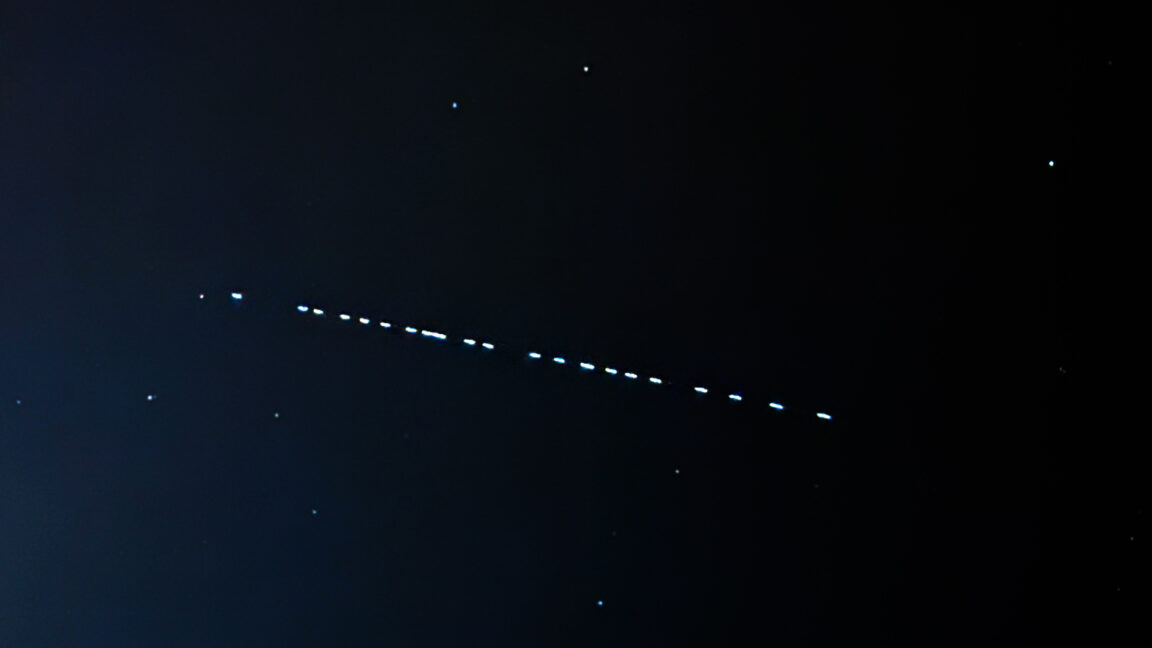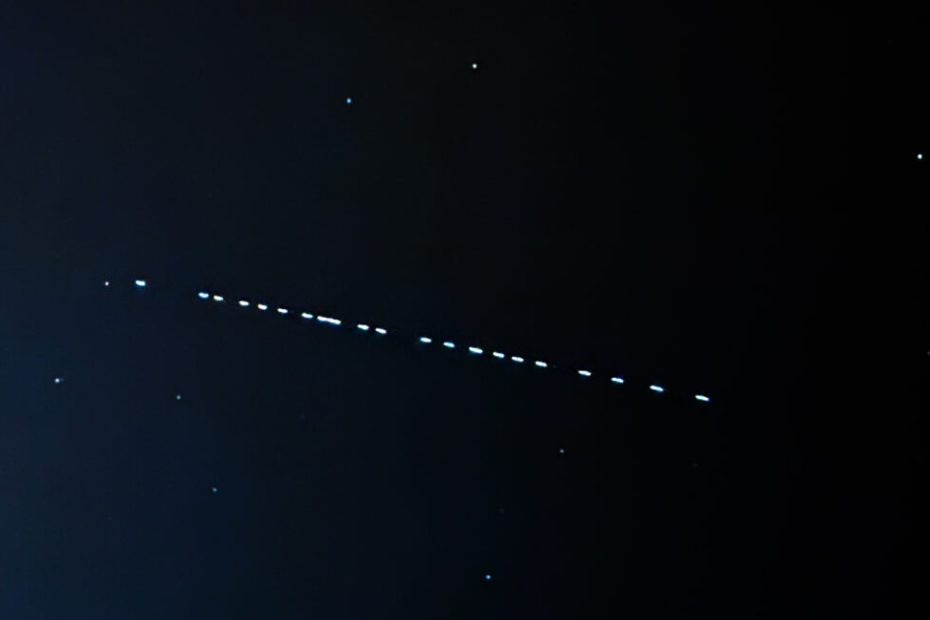
That's just Elon
But many UAP cases have verifiable explanations such as aircraft, drones or satellites, and lawmakers argue that AARO could potentially solve more of the cases with more funding.
The skies are busier than ever with air travel and consumer drones. More and more satellites are flying around the planet, as government agencies and companies like SpaceX deploy their constellations for internet connectivity and surveillance. There are more things to see up there.
“AARO is increasingly receiving cases that it can resolve to the Starlink satellite constellation,” the agency said in this year's annual report.
“For example, a commercial pilot reported white flashing lights in the night sky,” AARO said. “The pilot reported no altitude or speed, and no data or images were captured. AARO ruled that this sighting of flashing lights correlated with a Starlink satellite launch from Cape Canaveral, Florida, the same evening approximately an hour before the sighting.”
Jon Kosloski, director of AARO, said officials compared the parameters of these observations to Starlink launches. When SpaceX places Starlink satellites into orbit, the spacecraft are initially clustered and reflect more sunlight back to Earth. This makes the satellites easier to see at dusk, before they increase their orbit and become fainter.
“We found some of those correlations in time, the direction they were looking and the location,” Kosloski said. “And we were able to determine that in those cases they were all looking at Starlink flares.”
SpaceX has more than 6,600 Starlink satellites in low Earth orbit, more than half of all active spacecraft. Thousands more satellites are planned for the Kuiper broadband constellation and Amazon's Chinese internet network in the coming years.
“AARO is investigating whether other unresolved cases can be attributed to the expansion of Starlink and other mega-constellations in low Earth orbit,” the report said.
The Starlink network is still relatively new. SpaceX launched the first Starlinks five years ago. Kosloski said he expects the number of erroneous UAP reports caused by satellites to decrease as pilots and others understand what the Starlinks look like.
“It looks interesting and potentially anomalous, but we can model that and we can show pilots what that anomaly looks like so that doesn't necessarily get reported to us,” Kosloski said.

